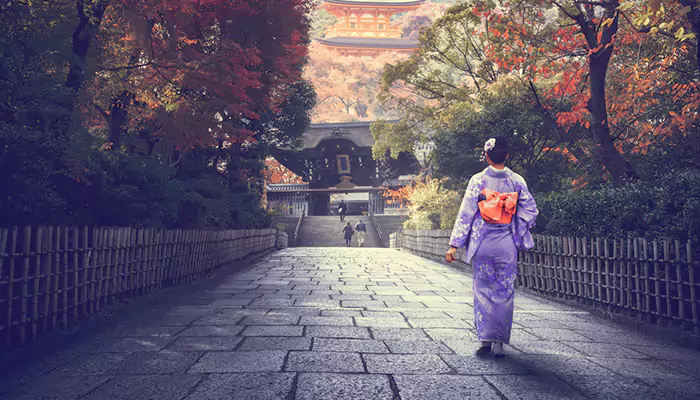Uncovering the Truth About Geishas and Debunking Common Myths
Geishas have long been shrouded in mystery and misconception, often portrayed in movies and literature in ways that don't reflect their true essence. These iconic figures of Japanese culture have a rich history and tradition that goes beyond the surface. Geishas also have a distinct appearance with their elaborate hairstyles, makeup, and traditional attire. These elements are not meant to objectify or exoticize them but are part of their cultural identity and artistic expression. Each element of a Geisha's appearance has meaning and symbolism, reflecting their dedication to their craft. Read along to learn the truth about Geishas, debunking common myths and uncovering the reality behind this fascinating world.
- Elisa Ghosh
- 27 April, 2024
- 2 mins ago

Uncovering the Truth About Geishas and Debunking Common Myths
Geishas have long been shrouded in mystery and misconception, often portrayed in movies and literature in ways that don't reflect their true essence. These iconic figures of Japanese culture have a rich history and tradition that goes beyond the surface. Geishas also have a distinct appearance with their elaborate hairstyles, makeup, and traditional attire. These elements are not meant to objectify or exoticize them but are part of their cultural identity and artistic expression. Each element of a Geisha's appearance has meaning and symbolism, reflecting their dedication to their craft. Read along to learn the truth about Geishas, debunking common myths and uncovering the reality behind this fascinating world.
Understanding Geishas
Contrary to popular belief, Geishas are not courtesans or prostitutes. They are highly skilled entertainers trained in traditional Japanese arts such as dance, music, and conversation. Geishas dedicate years to mastering these arts, making them respected members of their communities. Their role is to provide hospitality and entertainment at social gatherings, not to engage in intimate relationships.
Myth 1: Geishas are only found in Japan's past.
Reality: While Geishas have a long history dating back centuries, they still exist in modern-day Japan. Although their numbers have dwindled compared to the past, there are still Geisha districts in cities like Kyoto and Tokyo where Geishas continue to practice their art.
Myth 2: Geishas are forced into the profession.
Reality: Becoming a Geisha is a choice made by individuals who are passionate about preserving traditional Japanese culture. Young girls who enter Geisha training, known as maiko, do so willingly and undergo rigorous training to become skilled Geishas.
Myth 3: Geishas are only women.
Reality: While the majority of Geishas are women, there are also male Geishas known as "geiko" or "taikomochi." These male entertainers specialize in comedy, storytelling, and music, adding diversity to the Geisha world.
Myth 4: Geishas are only skilled in traditional arts.
Reality: While Geishas are known for their proficiency in traditional Japanese arts, they are also knowledgeable about a wide range of topics. They undergo rigorous training in history, literature, and current events, allowing them to engage in meaningful conversations with guests from diverse backgrounds.
Myth 5: Geishas are always serious and stoic.
Reality: While Geishas maintain a level of grace and composure during formal events, they are also capable of humour and light-heartedness. They use wit and charm to entertain guests, creating a lively and enjoyable atmosphere.

Myth 6: Geishas are a dying art form.
Reality: Despite challenges such as declining numbers and changing societal norms, Geishas continue to adapt and thrive. Efforts are being made to preserve and promote the Geisha tradition, ensuring that future generations can appreciate their unique contributions to Japanese culture.
Myth 7: Geishas is that they are secretive
One of the biggest misconceptions about Geishas is that they are secretive and unapproachable. In reality, Geishas are trained in the art of conversation and hospitality, making them adept at engaging with guests and creating a welcoming atmosphere. They are not reserved or distant but rather skilled in social interactions.
Geishas embody a unique blend of tradition, artistry, and hospitality that is often misunderstood. By debunking common myths and uncovering the truth about Geishas, we gain a deeper appreciation for their role in preserving Japanese culture. They are not relics of the past but living symbols of a timeless tradition that continues to inspire and fascinate people around the world.










